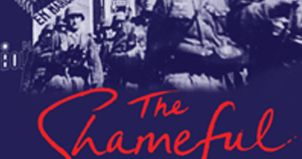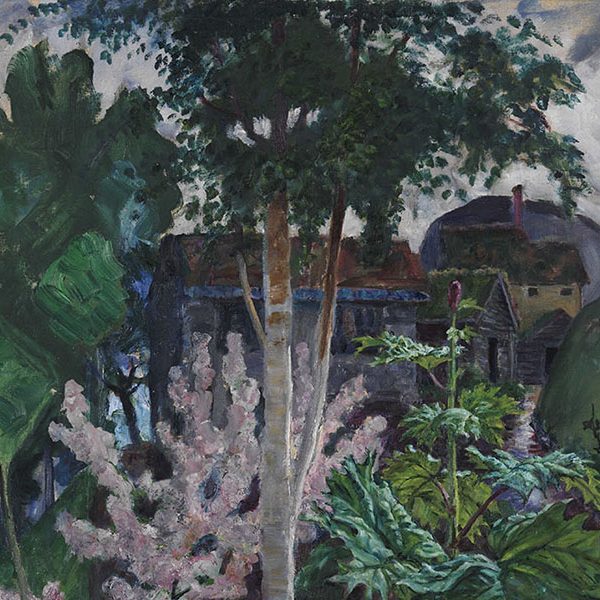The Arts, Occupied: France’s Shameful Peace with the Nazis
Read an excerpt from The Shameful Peace
“Long live the shameful peace,” said writer and artist Jean Cocteau. It was World War II; France was now occupied by German forces, and the cultural elite were faced with how to survive. Frederic Spotts takes Cocteau’s offhand remark as his title in The Shameful Peace: How French Artists and Intellectuals Survived the Nazi Occupation, in which he explores the strategies of the artist and intellectuals during Nazi occupation. Before the occupation, Paris was the cultural capital of the world. “Given France’s historical role,” writes Spotts, “what happened to artists and the arts is therefore an essential part of both the history of the Occupation and, it is not too dramatic to claim, of Western civilization in the twentieth century.”
 It was an unusual military occupation, particularly as it pertained to the arts. Hitler, himself a failed artist, made culture a central part of his occupation strategy. “Never before in history had a victor framed a cultural policy for a people it had just vanquished, much less one that aimed to make them happy,” Spotts writes. “It seemed too good to be true. And of course it was.” The Nazis continued their campaign inside and outside France, including forced labor for French soldiers, while simultaneously courting French artists to their side and boasting of German cultural riches. This served a strategic as well as ideological purpose. “In the arts [Hitler] saw a narcotic to be used to pacify the French and make them amenable to collaboration while he was busy with his war in the Soviet Union. So he not only allowed but actively encouraged a rich artistic life.”
It was an unusual military occupation, particularly as it pertained to the arts. Hitler, himself a failed artist, made culture a central part of his occupation strategy. “Never before in history had a victor framed a cultural policy for a people it had just vanquished, much less one that aimed to make them happy,” Spotts writes. “It seemed too good to be true. And of course it was.” The Nazis continued their campaign inside and outside France, including forced labor for French soldiers, while simultaneously courting French artists to their side and boasting of German cultural riches. This served a strategic as well as ideological purpose. “In the arts [Hitler] saw a narcotic to be used to pacify the French and make them amenable to collaboration while he was busy with his war in the Soviet Union. So he not only allowed but actively encouraged a rich artistic life.”
Spotts sets the scene to see the actions of major cultural figures like Matisse, Cocteau and Picasso against the background of the policies of the occupiers. The way those policies interact with pre-existing tensions in French politics and culture are fascinating and complex. At times, Spotts lends nuance to the picture in showing where the Nazi agenda gave muscle to those who were willing to suppress or modify art for their own purposes. For example, Spotts brings to light the French right-wing censorship of avant-garde artists, whereas the Germans gave permission to exhibit paintings which would not have been found elsewhere under German rule. “Harrassment of painters and galleries came not from the Germans or Vichy but ring-wing art critics,” Spotts writes. Picasso faced the most opposition from General Franco, not the Germans or Vichy.
Artists faced a distinct set of questions around collaboration with the German occupation. Indeed, what was collaboration? Could the mere act of producing “French” work be subversive, especially given Hitler’s desire to insidiously prove German cultural superiority? Some artists, such as Edith Piaf who frequently performed for German soldiers yet participated in resistance activities, had a decidedly ambiguous relationship with the occupation. Spotts quotes Sartre’s assessment: “Everything we did was equivocal. We never quite knew whether we were doing right or wrong. A subtle poison corrupted even our best actions.”
Upon the exit of the soldiers in the wake of war, the artists, like everyone else, were left to make sense of their shaken world. In this light we find the work of existentialists which like Camus and Sartre struggle with the possibility to move forward in what seemed like a morally and practically empty predicament. “The existentialist response was simple,” Spotts describes. “Play the impossible game of life with as much courage and dignity as possible.” Spotts presents these accounts with little judgment and allows the reader to inhabit the experiences of artists on their own terms. Instead the author concludes, “In ways honourable and dishonourable, they sought to survive.”




